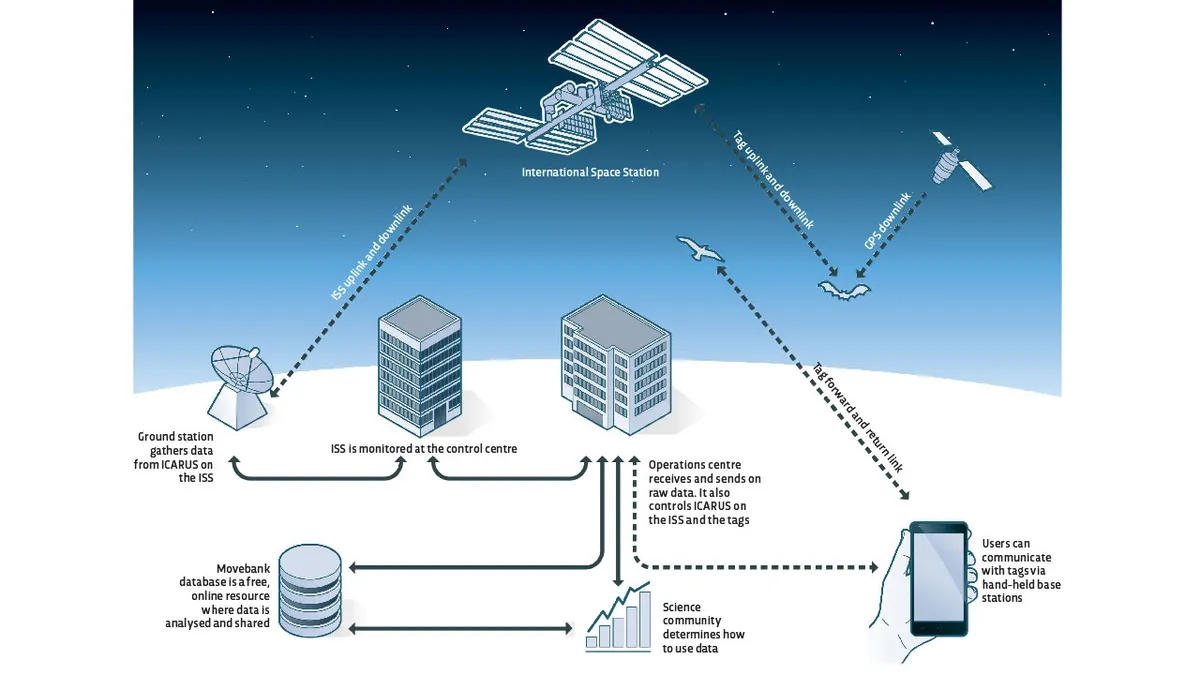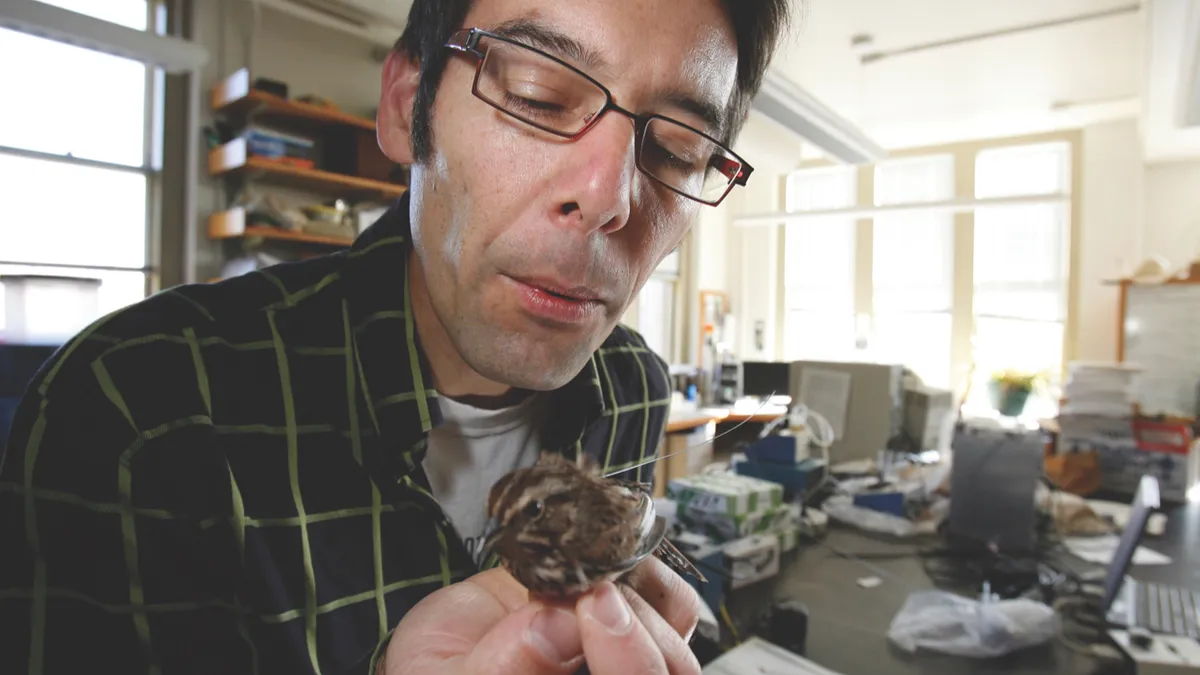The skill of observing animals to aid our survival dates back millennia. Nearly 6,000 years ago, the indigenous people of North America used their deep understanding of bison behaviour to devise an efficient way to hunt; they frightened the herd into stampeding over a precipice and plummeting down to a butchering camp below.
In modern times, our interest in animal behaviour comes with new insights and terminology. ‘Herdsourcing’, for example, borrows from the word: ‘crowdsourcing’, but centres on using the collective intelligence of wildlife rather than people. Over the last few years, watching animals for the clues they provide about the natural world has shifted from folklore to science.
In 2013, for example, US scientists put to the test the ‘old wives’ tale’ thatcowslie down when rain is on its way. The researchers measured the core body temperature of cattle and found that cows lie down when it’s cold and stand up when it’s hot to disperse heat. It may not accurately predict precipitation, but it does show a link between cattle behaviour and the weather.
Similarly, in September 2015, researchers studying public health records in Costa Rica found a connection between snake behaviour and weather patterns. The snakes were more prone to bite during the El Niñocycle.
Evidence that animals can be used as ‘intelligent sensors’ to predict imminent earthquakes also continues to grow. In 2014, researchers published a paper exploring unusual animal behaviours preceding the 2011 earthquake and tsunami that devastated Japan. As well as clingier behaviour from pets, the authors reported a fall in milk yields in cows within 340km of the epicentre a week before the earthquake struck. Stress impacts milk production, suggesting the cows sensed the earthquakebefore it happened.
“Watching animals for the clues they provide about the natural world has shifted from folklore to science”
Furthermore, in 2015, researcherspublished findingsfrom a 2011 study using motion-triggered cameras in Peru’s Yanachaga National Park. The cameras captured changes in animal behaviour before the magnitude 7.0 Contamana earthquake hit. On a typical day the cameras recorded up to 15 animal sightings, but 23 days before the earthquake the number dropped below five. And then, in the week ahead of the event, it was down to zero. By recording the reflection of very low frequency radio waves above the sea surrounding the epicentre, the scientists detected disturbances in the ionosphere, which started two weeks before the earthquake. A large fluctuation, recorded eight days prior to the quake, coincided with the second significant decrease in the animals’ activity.
Anglia Ruskin’s Dr Rachel Grant, who led the experiment, cites ‘positive airborne ions’ – released when rock is subjected to stress – as likely having an effect on mammals and birds.
It is also likely that wildlife may be able to identify variations in atmospheric pressure, groundwater levels, gravity and chemical substances in the days or weeks prior to an earthquake taking place.
So if animals can act as an early warning system, how can we capitalise on this?
ICARUS takes flight
This year, scientists plan to raise the stakes in investigating these phenomena with the launch of theICARUS Initiative– a system of observing wildlife from space.
ICARUS (International Cooperation for Animal Research Using Space) will see thousands of creatures fitted with tracking tags to allow radio-frequency communication with theInternational Space Station(ISS).
By globally tracking animal movements in real time, the ICARUS scientists believe they will be able to create an early warning system to predict natural disasters before they happen.
Furthermore, they will learn more about the spread of diseases, gain new insights into climate change, help conserve endangered species and develop better ecosystem services such as pollination, pest control and seed dispersal.

This is where ICARUS comes into play. This year, astronauts will fit a dedicated wildlife radio receiver/antenna onto the International Space Station (ISS). The device will enable long-distance tracking of animals in ways that have never previously been achieved.
Currently, when animals are tracked, data travels over mobile phone radio networks, which are full of dead zones where data cannot be transmitted. The ICARUS receiver will circle 320km above our planet, covering more than 90 per cent of the Earth’s surface.
As the ISS completes its orbit 16 times every 24 hours, the transmitters will never be out of transmission range for a significant length of time [see video below]. This means they will reliably be able to communicate with the ICARUS equipment at the ISS, to regularly measure positions using GPS.
“ICARUS will work where cell phones do not – on the oceans, in deserts, in backyard woods, in the mountains and in agricultural fields,” explains ICARUS director Dr Martin Wikelski.
The ICARUS team could then build algorithms that compare unusual animal movements or behaviours, such as the increased aggression of snakes or a drop in milk production in cows, to those already modelled in the system. This would indicate an imminent earthquake, or other natural disaster. Ultimately, information of this kind could then be relayed to governments, NGOs and relief organisations to save lives on the ground.
ICARUS will inform in other ways too. About 70 per cent of epidemics, including bird flu and SARS, result from animal-human contact. A system like ICARUS could provide epidemiologists with vital information on where and how diseases spread.
Keeping tabs on the tags
In the first two years, at least 2,000 animals – ranging from cuckoos to sea turtles – will be tagged, rising to as many as 20,000 over time. As well as noting the animals’ positions, the tags will include sensors to record altitude, diving depth, light intensity and any other areas of interest.
ICARUS is a CDMA (code division multiple access) system, a network that allows multiple transmitters to send information over a single communication channel at the same time. It is highly efficient and should allow for the future miniaturisation of the tags, the researchers say. Everything in CDMA is software-based, allowing easy upgrades of the system as the technology is refined.
“The key is to have a very powerful computer up in the sky to decode the signals. This is new and to our knowledge has not been done in any system before,” explains Wikelski.
To start with, ICARUS will use transmitters that weigh around 5g. However, the company aims to shrink these down to less than 1g so that they can track insects.

“We are doing active research to find the best attachment places such as bracelets in orangutans, backpacks for birds or ear tags for mammals,” Wikelski says. “In the future we don’t want to see animals with huge collars, but with a small ICARUS ear tag at most.”
Scientists are experimenting with ways of following ever-smaller creatures. In the UK, researchers tracked butterflies using harmonic radar, via a transponder inside a plastic tube. This was fixed to the insect’s thorax with double-sided sticky foam. The device tipped the scales at just 12mg (0.012g), just 8 per cent of the weight of the smaller species of butterfly used, and 4 per cent of the larger species. Generally, 3 per cent is the upper weight limit for tags, as anything above this may affect the animal’s behaviour or movement.
Even minuscule creatures, such as zooplankton, can successfully be tracked with nanotechnology. Prof Lars-Anders Hansson, from Lund University’s Centre for Animal Movement, usesquantum dots(Q-dots), microscopic fluorescent probes, for his work on the 1.5mm freshwater crustacean daphnia. However, the Q-dots are only visible within camera range, meaning they are currently only used to track organisms within aquariums.
Downsizing
“Nanotechnology is certainly being envisioned as we scale down the size of the tag,” explains Wikelski. “However, this initially means making a chip that is much smaller and more efficient than current technology. We think ICARUS, being a new communication platform, will provide a lot of space and incentive for ingenious engineering around the world.”
Interestingly, when it comes to animal movement ecology, some experts believe that political hurdles we face may prove more challenging than technological ones. Dr Yijun Yu, from the Department of Computing and Communications at The Open University, talks of “ethical, economic and social barriers”. He is looking to use cloud computing, which is already used to track the course of aircraft, to monitor the speed and shape of animal movements, and calls for more international collaboration.
Efforts are certainly afoot. In tandem with ICARUS, a bio-logging society will form, made up of international experts, to share data on migratory patterns and anomalies in wildlife behaviour in order to safeguard animal and human lives.
“The main mission is to alter fundamental human understanding of life on Earth by giving animals an opportunity to communicate with us,” Wikelski explains.
If the ICARUS Initiative is successful, our relationship with the animal kingdom will be enhanced beyond anything we’ve seen before. It will give us a deeper understanding of how animals behave in the lead up to a natural disaster such as an earthquake, and could ultimately help us to save not only endangered species but human lives too.
Follow Science Focus onTwitter,Facebook, Instagramand Flipboard